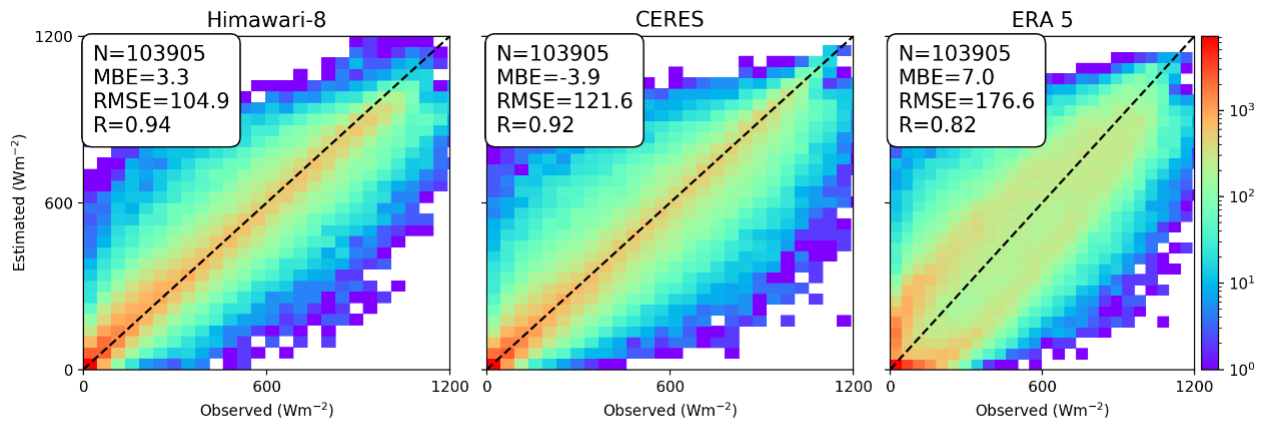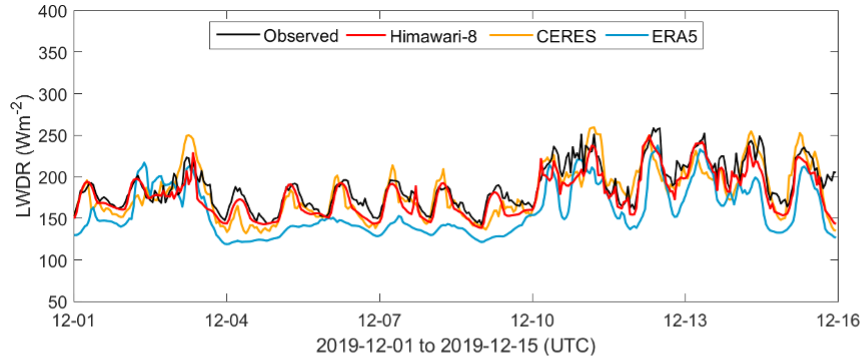A joint research team led by Prof. Husi Letu from the Aerospace Information Research Institute (AIR) of the Chinese Academy of Sciences (CAS) has developed a new dataset, East Asia-Pacific longwave/shortwave downward radiation at the surface data set (2016-2020), from the new generation geostationary satellite Himawari-8.
Their study was published in Bulletin of the American Meteorological Society.
Researchers from the National Space Science Center of CAS, Sun Yat-sen University and Tokai University were also involved in the study.
Surface downward radiation (SDR), including shortwave downward radiation and longwave downward radiation, plays an important role in energy and climate studies. It serves as an important parameter for calculating the surface radiation budget, as well as an important input parameter for land surface, hydrology, climate and other models.
With the continuous launch of high temporal-spatial resolution satellites and the continuous improvement of remote sensing inversion algorithms, the demand for high-precision surface radiation products turns out to be urgent.
The generation of this new dataset is based on the look-up table method (for shortwave radiation) and the general parameterization method (for longwave radiation).
The main input data is the retrieved cloud properties including cloud optical thickness, cloud effective radius and cloud top temperature, combining with auxiliary data such as water vapor, surface temperature, and ozone derived from ERA5, the fifth-generation reanalysis global atmosphere dataset from the European Centre for Medium-Range Weather Forecasts.
This method takes full advantage of the high spatial-temporal resolution (10min/5km) and wide spatial coverage of the Himawari-8 satellite (80E-200E, 60S-60N), and the time span is 2016-2020.
The researchers found that the accuracy of the shortwave radiation estimated by the Himawari-8 satellite was significantly higher than that of Clouds and Earth's Radiant Energy Systems (CERES). The overall accuracy of longwave radiation was comparable to the ERA5 products, and it showed better performance over high-altitude areas with a high spatial resolution.
The product can help to improve the calculation accuracy of energy budget and reveal the mechanism of the interaction between cloud-radiation-climate change.
Dataset download: https://doi.org/10.11888/Meteoro.tpdc.271729.
This research was supported by the National Key Research and Development Program, the National Natural Science Foundation of China, and the Second Comprehensive Scientific Expedition to the Qinghai-Tibet Plateau.








